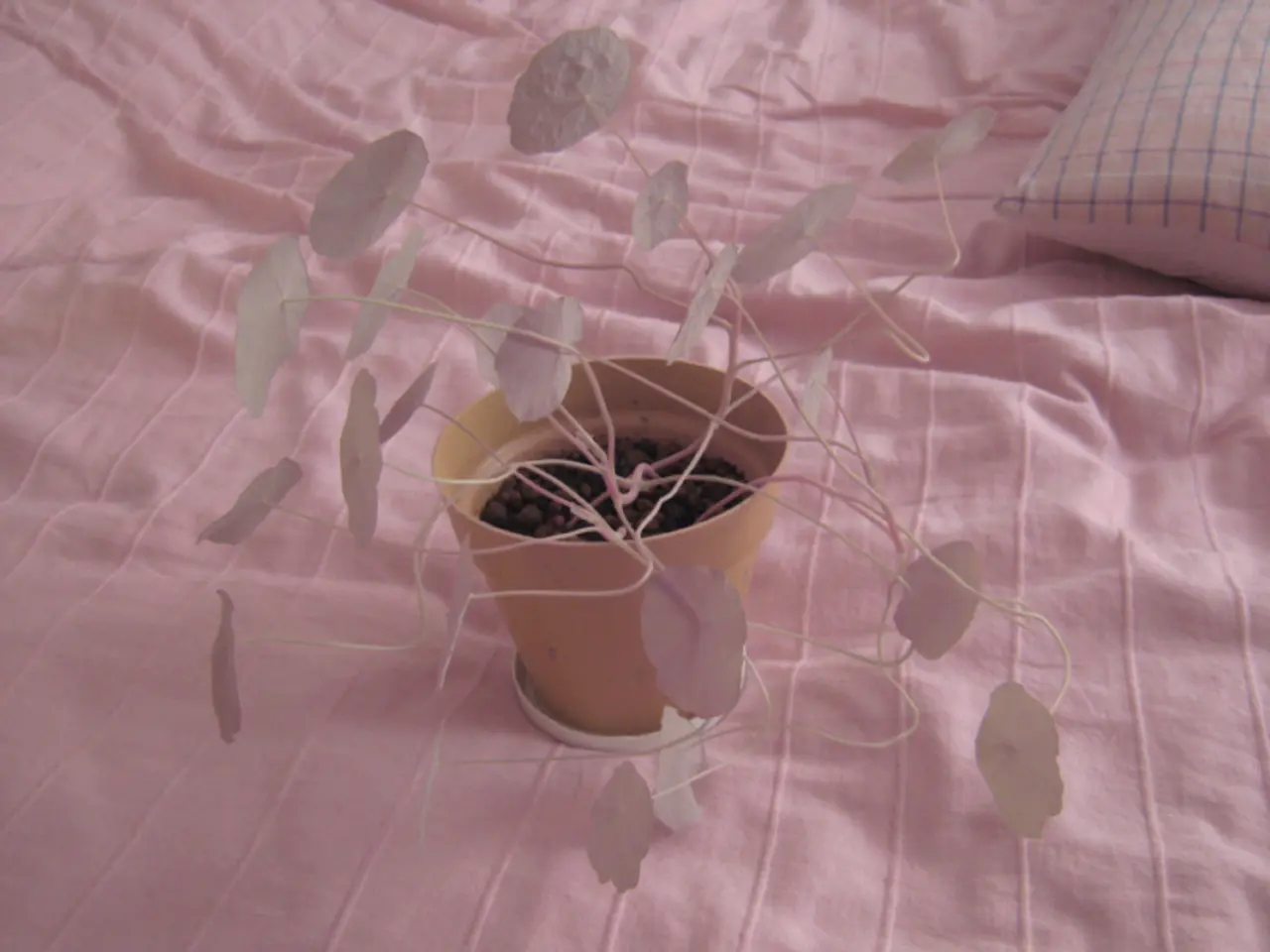Swap out the petunias: it's about time to bid farewell to traditional bedding options
In the world of horticulture, a significant shift is underway as garden enthusiasts across the UK are moving away from traditional bedding plants towards a more sustainable and pollinator-friendly approach.
Traditional bedding plants, such as petunias, busy Lizzies, geraniums, begonias, and antirrhinums, while prized for their color and long-lasting flowers, are often sterile or have double flowers that make it harder for pollinators to access nectar. This lack of nectar and pollen access means these plants offer little to our vital pollinator friends like bees, butterflies, and other insects.
However, the RHS Chelsea Flower Show, a celebrated event in the gardening calendar, has been reflecting this trend with a diverse array of naturalistic schemes featuring looser, less uniform borders. These schemes, showcased in gardens like Monty Don's Dog Garden and Matthew Butler and Joshua Parker's Garden of the Future, have been highlighting single, pollinator-friendly flowers.
Emma O'Neill, from Garden Organic, is leading the charge with inspiring planting schemes that can be explored at Ryton Organic Gardens' National Garden Scheme open day on 6th September. Emma recommends cosmos, with its open flower shape, abundant nectar, and seeds for birds, and bright marigolds, which attract insects such as hoverflies, parasitic wasps, and ladybirds.
But what are the best modern alternatives to traditional bedding plants for pollinator-friendly gardens? The answer lies in wildflower mixes, zinnias, angelonia, bee balm, milkweed, and hummingbird mint. These plants provide greater nectar and pollen access for our pollinator friends compared to traditional sterile or double-flowered bedding plants.
Zinnias, with their vibrant colors and varied flower shapes, thrive in full sun with well-draining soil and support pollinators while adding a splash of color to any garden. They are versatile, filling different garden layers with varieties ranging from compact to tall, making them ideal for designing pollinator-friendly spaces.
Angelonia, an underrated option, is suitable for warm-season container gardens and mixed borders. It too supports pollinators, making it a great choice for vibrant displays.
Wildflower seed kits, such as the Seed Pops Pollinator, containing perennial wildflower seeds along with planting aids, make it easy to grow diverse, pollinator-friendly flowers that support bees, butterflies, and songbirds.
Pollinator-friendly perennials like bee balm, milkweed, and hummingbird mint are excellent choices for attracting a variety of pollinators year after year and enhancing biodiversity in gardens.
Choosing plants grown from seed at home or wildflower mixes can reduce environmental impact compared to mass-produced bedding plants grown in energy-intensive glasshouses and sold in non-recyclable containers.
This shift towards sustainability is uniting the UK's 30 million gardeners, who are now choosing plants not only for the emotional response they elicit but their broader environmental benefits. By embracing pollinator-friendly gardens, we can create spaces that are both visually appealing and significantly more beneficial to our pollinator friends.
[1] RHS. (2021). RHS Chelsea Flower Show 2021. [online] Available at: https://www.rhs.org.uk/shows-events/rhs-chelsea-flower-show
[2] O'Neill, E. (2021). Pollinator-friendly plants for a more sustainable garden. [online] Garden Organic. Available at: https://www.gardenorganic.org.uk/blog/pollinator-friendly-plants-for-a-more-sustainable-garden
[3] Seed Pops. (2021). Pollinator Mix. [online] Available at: https://seedpops.co.uk/collections/wildflower-mixes/products/pollinator-mix
[4] The Guardian. (2021). The 10 best plants for attracting bees and butterflies to your garden. [online] Available at: https://www.theguardian.com/lifeandstyle/2021/jun/16/the-10-best-plants-for-attracting-bees-and-butterflies-to-your-garden
- In the horticulture sphere, lavish gardens featuring a diverse range of single, pollinator-friendly flowers, such as cosmos and marigolds, are being showcased at events like the RHS Chelsea Flower Show, emphasizing a shift towards a more sustainable and pollinator-friendly approach.
- Emma O'Neill from Garden Organic has been advocating for such sustainable gardens and her inspiring planting schemes can be explored at Ryton Organic Gardens' National Garden Scheme open day on 6th September.
- To create pollinator-friendly gardens, wildflower mixes, zinnias, angelonia, bee balm, milkweed, and hummingbird mint are some of the best alternatives to traditional bedding plants.
- These modern choices provide greater nectar and pollen access compared to traditional sterile or double-flowered bedding plants, supporting a diverse range of pollinators like bees, butterflies, and birds.
- By growing plants from seed at home or wildflower mixes and sticking to options like zinnias, angelonia, and wildflower seed kits, both visually appealing and environmentally friendly gardens can be established, benefiting pollinators and reducing the environmental impact compared to mass-produced bedding plants.




